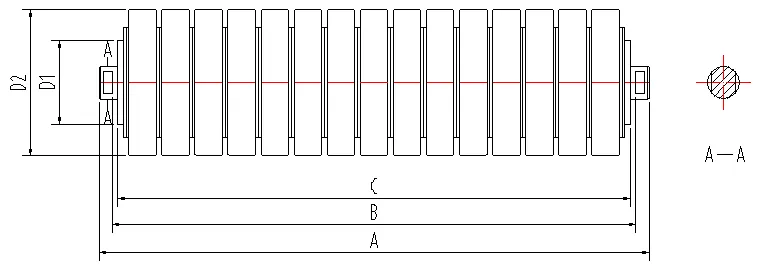 Afrikaans
Afrikaans  Albanian
Albanian  Amharic
Amharic  Arabic
Arabic  Armenian
Armenian  Azerbaijani
Azerbaijani  Basque
Basque  Belarusian
Belarusian  Bengali
Bengali  Bosnian
Bosnian  Bulgarian
Bulgarian  Catalan
Catalan  Cebuano
Cebuano  Corsican
Corsican  Croatian
Croatian  Czech
Czech  Danish
Danish  Dutch
Dutch  English
English  Esperanto
Esperanto  Estonian
Estonian  Finnish
Finnish  French
French  Frisian
Frisian  Galician
Galician  Georgian
Georgian  German
German  Greek
Greek  Gujarati
Gujarati  Haitian Creole
Haitian Creole  hausa
hausa  hawaiian
hawaiian  Hebrew
Hebrew  Hindi
Hindi  Miao
Miao  Hungarian
Hungarian  Icelandic
Icelandic  igbo
igbo  Indonesian
Indonesian  irish
irish  Italian
Italian  Japanese
Japanese  Javanese
Javanese  Kannada
Kannada  kazakh
kazakh  Khmer
Khmer  Rwandese
Rwandese  Korean
Korean  Kurdish
Kurdish  Kyrgyz
Kyrgyz  Lao
Lao  Latin
Latin  Latvian
Latvian  Lithuanian
Lithuanian  Luxembourgish
Luxembourgish  Macedonian
Macedonian  Malgashi
Malgashi  Malay
Malay  Malayalam
Malayalam  Maltese
Maltese  Maori
Maori  Marathi
Marathi  Mongolian
Mongolian  Myanmar
Myanmar  Nepali
Nepali  Norwegian
Norwegian  Norwegian
Norwegian  Occitan
Occitan  Pashto
Pashto  Persian
Persian  Polish
Polish  Portuguese
Portuguese  Punjabi
Punjabi  Romanian
Romanian  Russian
Russian  Samoan
Samoan  Scottish Gaelic
Scottish Gaelic  Serbian
Serbian  Sesotho
Sesotho  Shona
Shona  Sindhi
Sindhi  Sinhala
Sinhala  Slovak
Slovak  Slovenian
Slovenian  Somali
Somali  Spanish
Spanish  Sundanese
Sundanese  Swahili
Swahili  Swedish
Swedish  Tagalog
Tagalog  Tajik
Tajik  Tamil
Tamil  Tatar
Tatar  Telugu
Telugu  Thai
Thai  Turkish
Turkish  Turkmen
Turkmen  Ukrainian
Ukrainian  Urdu
Urdu  Uighur
Uighur  Uzbek
Uzbek  Vietnamese
Vietnamese  Welsh
Welsh  Bantu
Bantu  Yiddish
Yiddish  Yoruba
Yoruba  Zulu
Zulu drum lagging
Understanding Drum Lagging in Industrial Applications
Drum lagging, often encountered in various industrial processes, refers to the insulation or protective covering applied around rotating drums or cylinders. This practice is particularly prevalent in industries involving bulk material handling, such as mining, cement production, and food processing. The significance of drum lagging lies not only in safeguarding the equipment but also in enhancing operational efficiency and safety.
The primary function of drum lagging is to improve the friction between the drum and the material being processed. In applications like conveyor systems, the lagging material is typically made from rubber or other high-friction compounds designed to grip the conveyed materials effectively. This increased friction minimizes slippage, ensuring that materials are transported efficiently without unnecessary wear on the drum surface.
Moreover, drum lagging plays a crucial role in thermal insulation
. In high-temperature applications, such as those found in drying or heating processes, insulating the drum can help maintain the desired temperature while protecting both the equipment and the surrounding environment. Efficient thermal management reduces energy costs and enhances the overall productivity of industrial operations.drum lagging

Incorporating drum lagging can also lead to longer equipment life. The protective layer minimizes the mechanical stress on the drum, reducing the likelihood of damage and increasing the service life of the equipment. This longevity translates to lower maintenance costs and reduced downtime for repairs, allowing for smoother and more reliable operations.
It's essential to choose the right type of lagging based on the specific operational requirements. Different materials are available, each offering unique properties tailored to various applications. For instance, while rubber lagging is popular in many setups for its durability and anti-slip properties, other materials like ceramic or composite lagging may be better suited for extreme conditions or specific material handling needs.
Regular inspection and maintenance of drum lagging are vital to ensure optimal performance. Over time, the lagging material can wear down, reducing its effectiveness and compromising safety. Implementing a schedule for routine checks can help identify issues early, allowing for timely replacement or repair.
In conclusion, drum lagging is a critical component in numerous industrial processes, serving to enhance grip, provide thermal insulation, and prolong the life of equipment. By selecting appropriate materials and ensuring regular maintenance, industries can optimize their operations, increase safety, and reduce costs, making drum lagging an indispensable aspect of modern manufacturing and material handling systems. As industries continue to evolve, the importance of effective drum lagging will undoubtedly remain a key consideration for operational success.
-
Trusted Conveyor Solutions from Leading Conveyor Idler Roller ManufacturersNewsJun.27,2025
-
Reliable Return Idler Solutions for Efficient Belt Conveyor SystemsNewsJun.27,2025
-
Precision Conveyor Accessories for Streamlined Material HandlingNewsJun.27,2025
-
High-Quality Belt Conveyor Idler Solutions for Efficient Material HandlingNewsJun.27,2025
-
High-Performance Belt Conveyor Pulleys for Reliable Material HandlingNewsJun.27,2025
-
Enhancing Material Handling EfficiencyNewsJun.27,2025





























